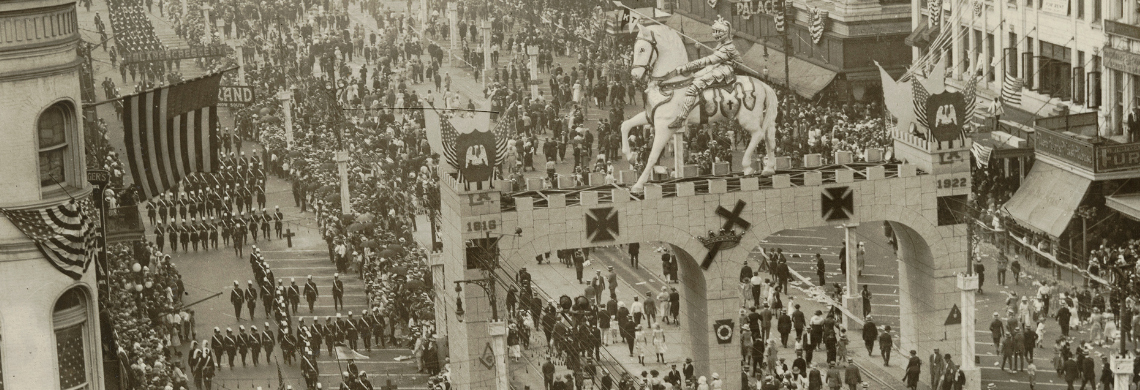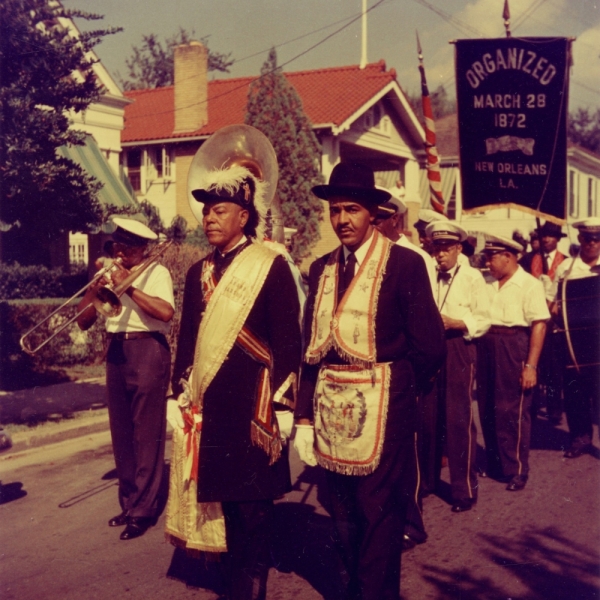A Mystic Brotherhood: Fraternal Orders of New Orleans
December 8, 2023 to May 12, 2024
Tuesday–Saturday, 9:30 a.m.–4:30 p.m.; Sunday, 10:30 a.m.–4:30 p.m.
520 Royal Street, Tricentennial Wing, 2nd Floor
Free ticketed admission
About the Exhibition
For centuries, Freemasons, Odd Fellows, and other similar fraternal organizations have contributed to the network of benevolent and mutual aid societies that cradle New Orleans’s social, cultural, and civic life. Dedicated to building friendship and understanding through a mission of charity, education, and goodwill, the first of these orders was established locally in the 18th century, and more than a dozen chapters, or “lodges,” remain active in the city today.
Through objects and images drawn from THNOC’s collections, the new exhibition A Mystic Brotherhood: Fraternal Orders of New Orleans explores the sometimes-hidden history of these organizations and illuminates how they helped shape today’s city. Visitors will meet many familiar names from New Orleans history as they survey the narrative, including William C. C. Claiborne, Oscar J. Dunn, and Homer Plessy—all lodge members—as well as learn about the many landmarks across the cityscape in which the history happened.
Masonic and Odd Fellows lodges became a familiar and integral part of life in the city for both white and Black New Orleans men by the mid-19th century. (Though women were excluded from joining the all-male lodges, there were auxiliary groups for them.) Between the Civil War and the early 20th century, they would be joined by lodges of the Knights of Pythias, the Benevolent and Protective Order of Elks, Knights of Columbus, and others.
Beyond the bonds of fellowship, these fraternal lodges provided practical benefits to their members. In times of sickness, members received relief payments to compensate for their inability to work. The lodges also covered the costs of medical care, prescriptions, and funerals for their members, providing vital support to their beneficiaries. This economic impact extended to undertakers, physicians, druggists, printers, and regalia manufacturers, as well as the brass bands that performed during funerals and annual parades.
Image (above): Knights Templar parade on Canal Street (detail); April 1922; gift of Mrs. Thomas Lennox, 1986.194.23
Support
WWL-TV is media partner for A Mystic Brotherhood, a companion exhibition to Mystery and Benevolence: Masonic and Odd Fellows Folk Art, a traveling exhibition on view from February 16 to May 12, 2024. Mystery and Benevolence was organized by the American Folk Art Museum, New York, from the Kendra and Allan Daniel Collection and is toured by International Arts & Artists, Washington, DC.


